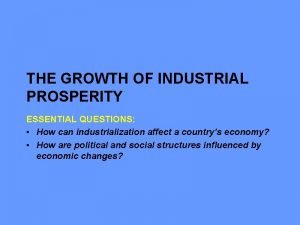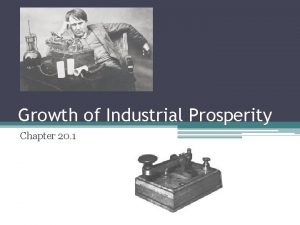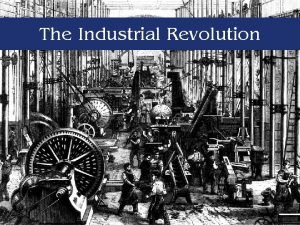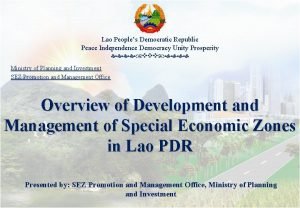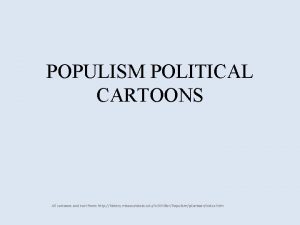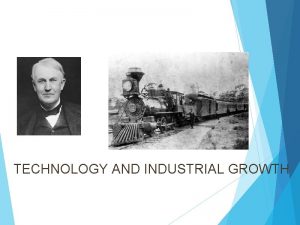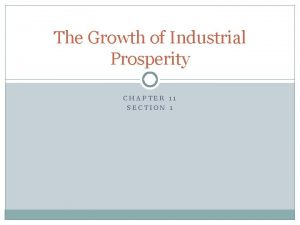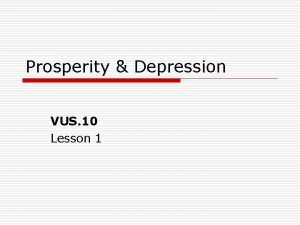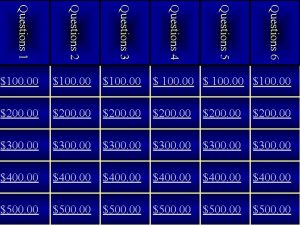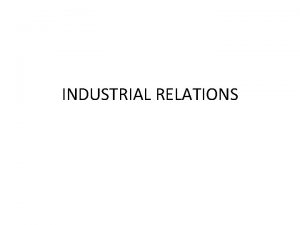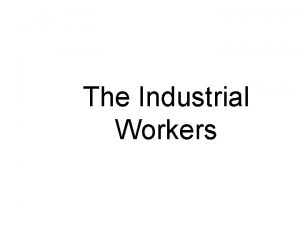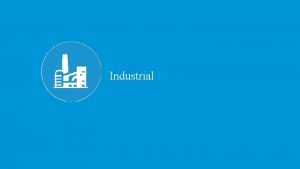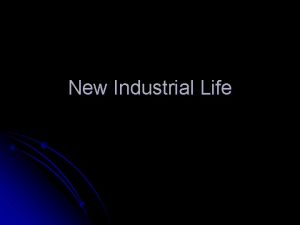THE GROWTH OF INDUSTRIAL PROSPERITY ESSENTIAL QUESTIONS How


















- Slides: 18

THE GROWTH OF INDUSTRIAL PROSPERITY ESSENTIAL QUESTIONS: • How can industrialization affect a country’s economy? • How are political and social structures influenced by economic changes?

The Second Industrial Revolution Guiding Question: What were the causes and effects of the Second Industrial Revolution in Western Europe? 1 st Industrial Revolution - textiles, railroads, iron, and coal. 2 nd Industrial Revolution, steel, chemicals, electricity, and petroleum led the way to new industrial frontiers.

Second Industrial Revolution Inventions 1855: Bessemer process for making steel more efficiently and cheaply Effects Stronger frameworks for larger buildings and stronger rails for railroad tracks 1860 s: Electric generator by Zénobe-Théophile Gramme Reliable flow of electricity; electrical energy convertible to mechanical energy to run machines 1870 s: Incandescent light bulb by Thomas Edison and telephone by Alexander Graham Bell Longer work hours; faster communication across regions

Second Industrial Revolution Inventions Effects 1903: Airplane by Wright brothers Increase in speed of travel and movement of goods 1909: Synthetic ammonia by Fritz Haber and Carl Bosch Increase in crop yields from use of chemical fertilizers 1913: Assembly line pioneered by Henry Ford Increase in efficient mass production of goods; reduction in prices of goods and increase in sales





Why did industrial production grow rapidly? • greatly increased sales of manufactured goods. • Assembly line - pioneered by Henry Ford in 1913, a manufacturing method that allowed much more efficient mass production of goods • Mass Production - production of goods in quantity usually by machinery

Ford Assembly Line

Second Industrial Revolution takes steps towards a world economy… • 2 nd Second Industrial Revolution, combined with the growth of transportation by steamship and railroad, fostered a true world economy. • By 1900, Europeans were receiving products from areas all around the world. • European capital ($) was also invested abroad to develop railways, mines, electrical power plants, and banks. • foreign countries also provided markets for Europe’s manufactured goods. • With its capital, industries, and military might, Europe dominated the world economy by 1900.

Analyze the Map - How do you think the environment was affected in areas of industrial concentration?

Organizing the Working Classes Guiding Question: How was socialism a response to industrialization? • The transition(change) to an industrialized society was very hard on workers. • The desire to improve their working and living conditions led many industrial workers to form socialist political parties and socialist trade unions. • Remember: Socialism = a system in which society, usually in the form of the government, owns and controls the means of production • The theory on which they were based had been developed by Karl Marx. One form of Marxist socialism was eventually called communism.

Karl Marx: Process to a Classless Society “Society as a whole is more and more splitting up into two great hostile camps, into two great classes, directly facing each other: Bourgeoisie and Proletariat. ” —Marx and Engels, the Communist Manifesto

Karl Marx: Process to a Classless Society “In place of the old bourgeois society, with its classes and class antagonisms, we shall have an association, in which the free development of each is the condition for the free development of all. ” —Marx and Engels, the Communist Manifesto

Socialist Parties • socialist parties based on Marx's ideas • German Social Democratic Party (SPD), which emerged in 1875. • Under direction of Marxist leaders, the SPD advocated revolution while organizing itself into a mass political party that competed in elections for the German parliament. • When in parliament, SPD delegates worked to pass laws that would improve conditions for the working class. • In spite of government efforts to destroy it, in 1912 the SPD became the largest single party in Germany.

Marxist Parties Divided over Goals • Pure Marxists thought that capitalism could be defeated only by a violent revolution. • Remember: Capitalism = the economic system in which businesses are owned and controlled by individual people instead of by the government. • Other Marxists, called revisionists, rejected the revolutionary approach. • argued that workers must continue to organize in mass political parties and even work with other parties to gain reforms. • democratic systems.

Trade Unions • trade union = labor union. • To improve their conditions, workers organized in a union. • The right to strike was an important part of the trade union movement. • In a strike, a union calls on its members to stop work in order to pressure employers to meet their demands for higher wages or improved factory safety.
 The growth of industrial prosperity
The growth of industrial prosperity Lesson 1 the growth of industrial prosperity
Lesson 1 the growth of industrial prosperity Essential questions for industrial revolution
Essential questions for industrial revolution Plamatic acid
Plamatic acid Relative growth rates
Relative growth rates Root hair structure
Root hair structure Step growth polymerization vs chain growth
Step growth polymerization vs chain growth Primary growth and secondary growth in plants
Primary growth and secondary growth in plants Chapter 35 plant structure growth and development
Chapter 35 plant structure growth and development Geometric growth graph
Geometric growth graph Neoclassical growth theory vs. endogenous growth theory
Neoclassical growth theory vs. endogenous growth theory Organic vs inorganic growth
Organic vs inorganic growth Prosperity and depression worksheet answers
Prosperity and depression worksheet answers Prosperity oil
Prosperity oil Civil rights act of 1957 apush
Civil rights act of 1957 apush Peace independence democracy unity prosperity
Peace independence democracy unity prosperity Basic human aspirations are
Basic human aspirations are Shared prosperity kalamazoo
Shared prosperity kalamazoo Analyzing the populist party through political cartoons
Analyzing the populist party through political cartoons
